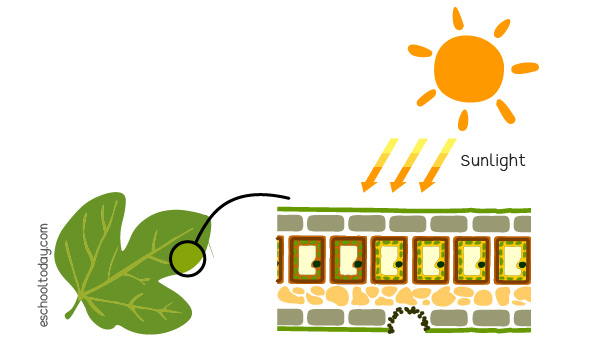- Photosynthesis
- Recommended Lessons
Light for photosynthesis
A leaf usually has a large surface area so that it can absorb a lot of light. A leaf’s top surface is protected from water loss, disease, and weather damage by a waxy layer. The upper part of the leaf is where the light falls, and it contains a type of cell called a palisade cell. It is adapted to absorb a lot of light. It has lots of chloroplasts.

In light-dependent reactions (as explained in light and dark reactions), photosynthesis increases with more light. More chlorophyll molecules are ionized and more ATP and NADPH are generated as more light photons are focused on a green leaf. Even though that light is important in light-dependent reactions, it is important to note that excessive light can damage chlorophyll, and photosynthesis can reduce.
Light-dependant reactions do not rely too much on temperature, water, or carbon dioxide, even though they are all necessary for the process to complete. That means whether it is cold or hot, the reactions will occur as long as there is enough light.
